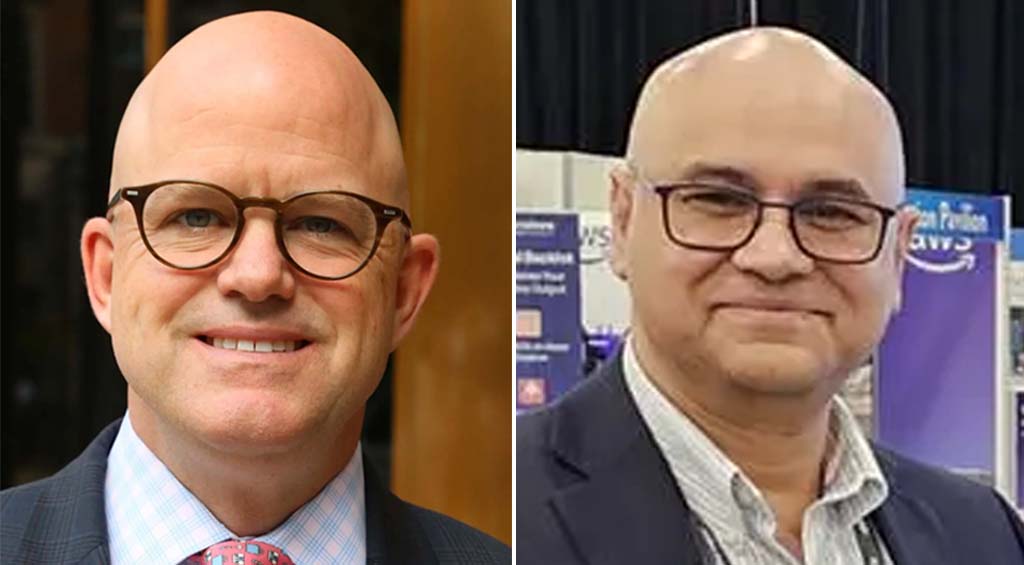MSTV/NAB Session Appraises DTV Status
LAS VEGAS
The MSTV membership meeting at the 2008 NAB Show took the form of a joint MSTV/NAB roundtable discussion, with representation from all segments involved in the DTV transition push.
Just over 300 days remain until the cessation of U.S. analog full-power television broadcasting, and the theme of this year’s session was “The Buck Stops Here!”
(click thumbnail)MSTV President David Donovan delivered the opening remarks.After brief introductory remarks by Association for Maximum Service Television President David Donovan, the program was turned over to moderator Richard Wiley, managing partner of Wiley Rein LLP, who solicited comments on the state of transition readiness from 11 individuals representing the broadcast industry, the federal government, cable and satellite interests, consumer groups and others.
Topics discussed in the town hall type forum ranged from response to transmitter availability to cable and satellite provider readiness.
DTV CONVERTER BOX PROGRAM
Responding to questions about the distribution of converter boxes, Anita Wallgren, director of the NTIA’s converter box coupon program, reported that manufacturer response had been good. “We have had over 5.5 million households that have requested coupons,” Wallgren said.
Arising fairly late in the transition program is the capability of commercially available converters to pass analog signals to allow viewing of low-power broadcasters who are not affected by the 2009 transition deadline.
“Analog pass-through is one of the permitted features that we chose to have included in the technical specifications [for the boxes],” Wallgren said. “Right now of the 73 converters that are certified, nine are analog pass-through-capable. On our Web site, and in the material that comes with the coupons, products are certified with a star to indicate pass-through capability. We encourage low-power broadcasters to endorse those boxes to their viewers.”
David Arland, president of Arland Communications, reported that Americans are also purchasing the antennas needed to make the converter boxes work. He said that sales have been fairly constant for the last five years, with between six and seven million antennas sold every year.
“We do anticipate there will be some increase in sales this year,” Arland said, “though it will probably be modest.”
Arland said that newly designed “smart” antennas should be coming on the market and these will add to the number of units reaching consumers.
Don Doty, president of Stainless LLC and chairman of the National Association of Tower Erectors, was asked about the status of tower work needed to take the transition to completion.
“Antenna manufacturers are very busy building hundreds of antenna systems, but [tower] contractors haven’t been pinged yet,” Doty said. “Judging by what we are seeing, we do expect something of a ‘crunch’ towards the end of the year.”
He urged that when this “crunch” does come, broadcasters must make sure that safety-related issues are not ignored in the pressure to complete tower work.
BACKUP SYSTEMS
Another transition issue discussed was the fact that in the push to meet the February deadline some broadcasters may ignore the necessity to include complete backup systems for all parts of the transmission path, including their STLs.
Other participants in the forum included Jay Adrick, vice president of broadcast technology at Harris Corp; William Check, NCTA senior vice president of science and technology; Sterling Davis, Cox Broadcasting vice president of engineering; Stacy Fuller, the DirecTV Group’s vice president of regulatory affairs; Barbara Kreisman, chief of the FCC’s video services division; David O’Connor Esq., Holland & Knight LLP; Robert Schwartz with Constantine Cannon LLP, and representing the Consumer Electronics Retailers Coalition; and John Taylor, vice president of public affairs and communications for LG Electronics USA Inc. ©NAB
The professional video industry's #1 source for news, trends and product and tech information. Sign up below.
James E. O’Neal has more than 50 years of experience in the broadcast arena, serving for nearly 37 years as a television broadcast engineer and, following his retirement from that field in 2005, moving into journalism as technology editor for TV Technology for almost the next decade. He continues to provide content for this publication, as well as sister publication Radio World, and others. He authored the chapter on HF shortwave radio for the 11th Edition of the NAB Engineering Handbook, and serves as contributing editor of the IEEE’s Broadcast Technology publication, and as associate editor of the SMPTE Motion Imaging Journal. He is a SMPTE Life Fellow, and a member of the SBE and Life Senior Member of the IEEE.

